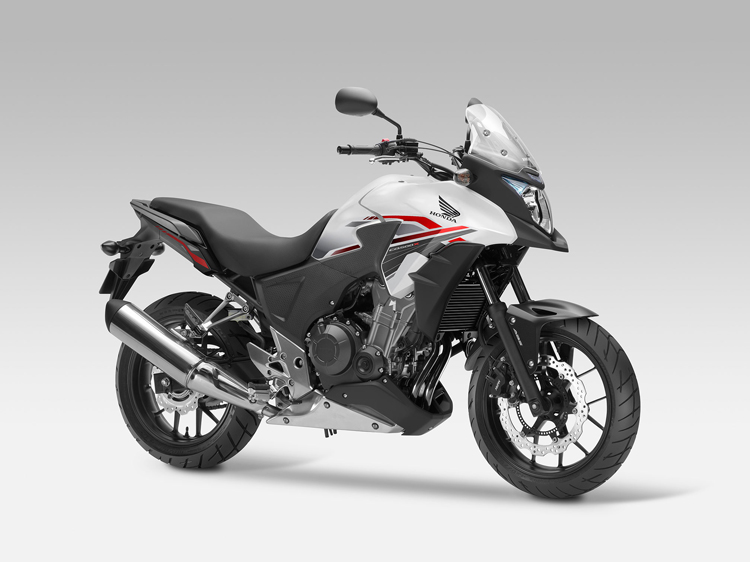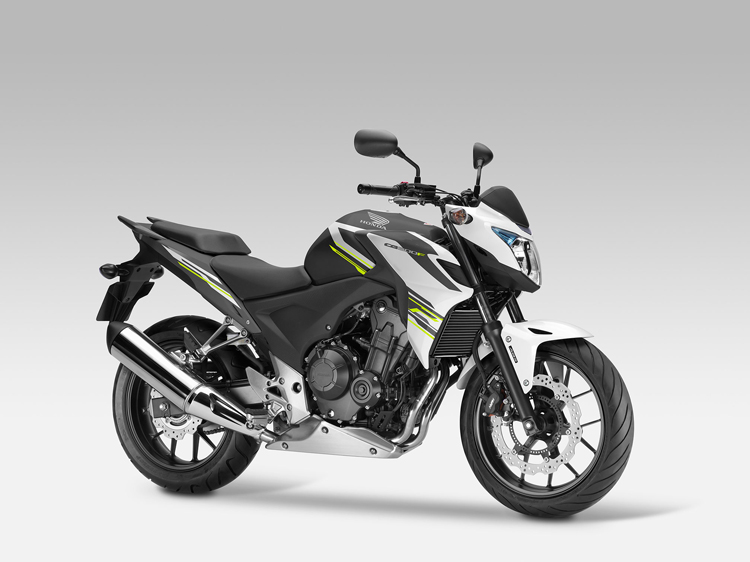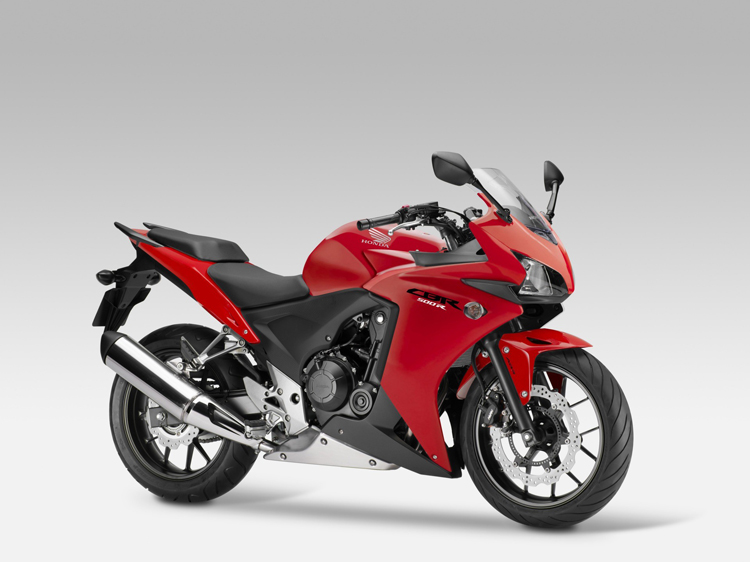
When it comes to small motorcycles, few manufacturers seem to be pounding out the various models like Honda. And who can blame them. After the unabashed success of the Honda Grom, Big Red seems keen to provide riders with the whole range of motorcycles they’ll need as they grow from new riders to novices to experienced two-wheeled enthusiasts. And the middle step in that process is clearly these: The CB500F, X and CBR500R.
Now, obviously these are three distinct motorcycles… at least, they’re distinct-ish. The F-model is intended for those that desire a standard, or naked sort of motorcycle experience with minimal fairings, a tiny windscreen, and a conventional handlebar mounted to the top triple tree. The R-model, as one would assume, is racier; with full sportbike fairings, low mounted signals, and clip-ons. And the X-model? Well, it’s the adventure-tourer in training, fitted with a taller handlebar, a fairing and windscreen that looks almost identical to that of the NC750X, and a single-piece seat.
But beyond those visual cues, much of the mechanicals between these Thai-built bikes are shared. The engine, a 470cc counterbalanced parallel twin that’s slightly oversquare but tuned to accentuate torque delivery and mileage over high-end horsepower, the frames, the suspension (sort of) and the gearbox are all unchanged from model to model. In fact, to give some indication of precisely how mechanically similar these bikes are, when it came time to turn the naked, F-model into the faired in R-model, Honda took the standard fork tubes from the F model and slipped them up in the triple trees to provide purchase for the clip-ons and lower the bike’s overall height. Pretty smart thinking that… especially when you’re discussing a triumvirate of motorcycles designed for newer and less experienced riders that may (unfortunately) come to appreciate the benefits of parts-sharing and the reduced costs that brings with it! Those with the X-model will need to get their fork tubes specifically from the X-model parts bin though; they’re 20mm longer for a bit more ride height and lazier steering geometry.

Now, in terms of suspension and brakes, all the CB500 models seem a bit softly sprung and mildly underdamped. But that’s hardly a mark against the Honda; we can’t think of anything in the entry-level bike market that isn’t a little squidgy on the suspension side of things… and if there was such a bike, it’d be too expensive to be considered an entry-level bike. So you’re probably not going to be setting lap records or hucking big air with these. But you will enjoy a nice, cosseting ride that’s very comfortable, and some impressive braking performance. We were skeptical of the big single disc setup, but they can haul you down pretty good, and the inclusion of ABS is absolutely fantastic.
Which brings us to the differences between them. Surprisingly, even though these bikes share many of the same mechanics, the simple change in riding position makes for some very different experiences. We’ll start with the two that are most similar: The CB500X and CB500F. With a similar upright riding position and wide handlebar (the X-model is a bit more upright due to a bit more rise in the handlebar) these two bikes actually feel pretty similar if you ride them around town. The soft suspension feels a bit more at home on the X-model though, where the dirt-bike, ADV-styled look of the thing sort of makes it feel like it should be capable of just bounding over big potholes and irregularities. Likewise, the plucky nature of the engine’s low-end torque delivery seems to pair up better with the X, although both bikes feel great as the combination of easily-accessed low-end torque mates up well with the wide handlebar to make both bikes feel nimble and quick around town. Out on the highway though, it has to be the X that gets the nod, due entirely to the larger windscreen keeping a lot more air off your chest at speed.

And finally, the price. The three models range in price from just around $6,000 to roughly $7,000, depending on dealer pricing, accessories and options. Generally speaking though the F-model is the cheapest and the X-model is the most expensive, with the faired-in R-model splitting the herd. That’s anywhere between $1,000 and $2,000 less than the Kawasaki Ninja 650 and ER6n, which are probably the closest things to competitors than the CB500F and CBR500R have. And the X-model? Well, it largely stands on its own in this market, and is a great way for people to dip their toe in the adv-touring scene without spending a pile of dough and if we’re honest we think it’s probably the one that has the most long-term promise. While most will migrate out of the CB500F and CB500R in favour of larger, more expressive motorcycles, there’s nothing stopping people from farkling their CB500X for off-road use, where its soft power delivery and light weight could be real boons. So if you’re looking to trade in your 250 or 300… take a look at these great little Hondas.